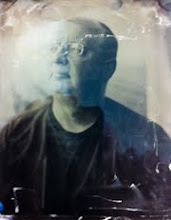Title: "Topographical Notes #27"
(click to view larger)
Tonight we watched part two of Dan Gilbert's series "This Emotional Life". Although the series is promoted as being about happiness and finding happiness, the first two parts have taken a large detour through obstacles to happiness, and emotions such as fear, anger and despair. I'm fascinated by what science has learned about the brain in the past two decades, some of the research upending long held beliefs about brain development and plasticity. I find the topic interesting and informative to my role as a teacher of others, and myself (which is what "the bertie project" is all about). In tonight's episode, there was some interesting insights into the brain physiology and chemistry of depression. One study has shown that the hippocampus in a depressed person is considerably smaller than the hippocampus of a "normal" person. The longer a person has gone with untreated depression, the smaller the hippocampus. Interestingly, those who are successfully treated with medications for their depression have a normal-sized hippocampus. A study at Stanford has shown that rats who receive anti-depression medications or ECT actually show the growth of substantially more new neurons in their brains than untreated rats, perhaps explaining the protective effect that medical treatment of depression has on the hippocampus size in humans.
All of this made me realize that there is an intricate internal topography of physiological structures, chemistries and emotions in each of us. Which dovetails very nicely with today's image, which shows an interior topography much different from the exterior shape and surface of the subject.


No comments:
Post a Comment